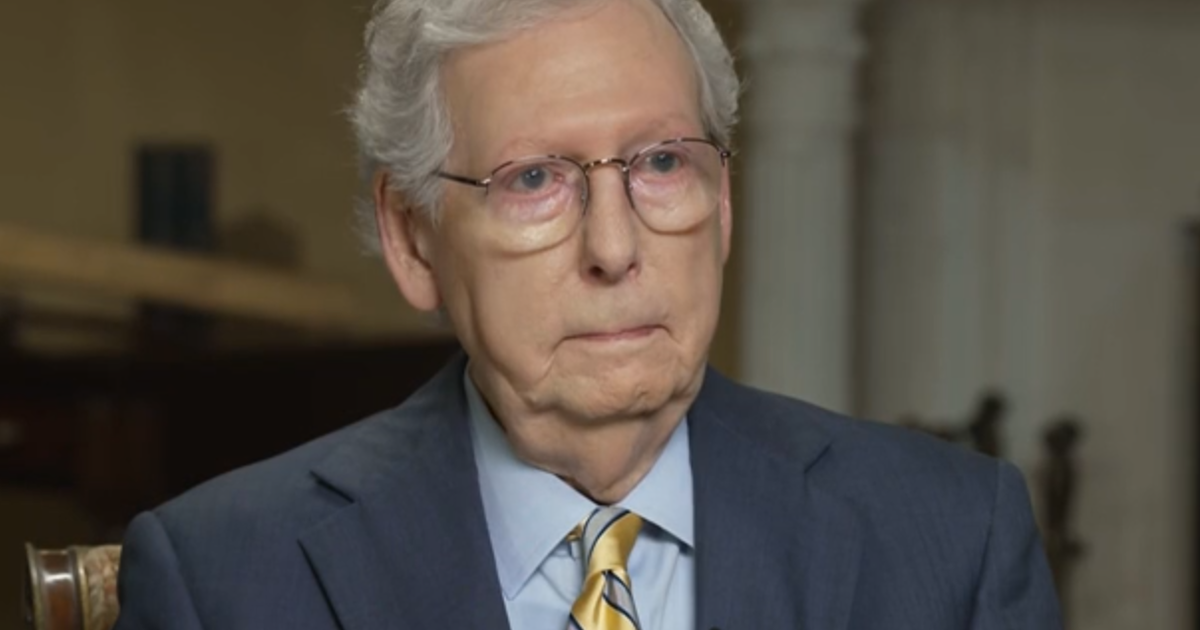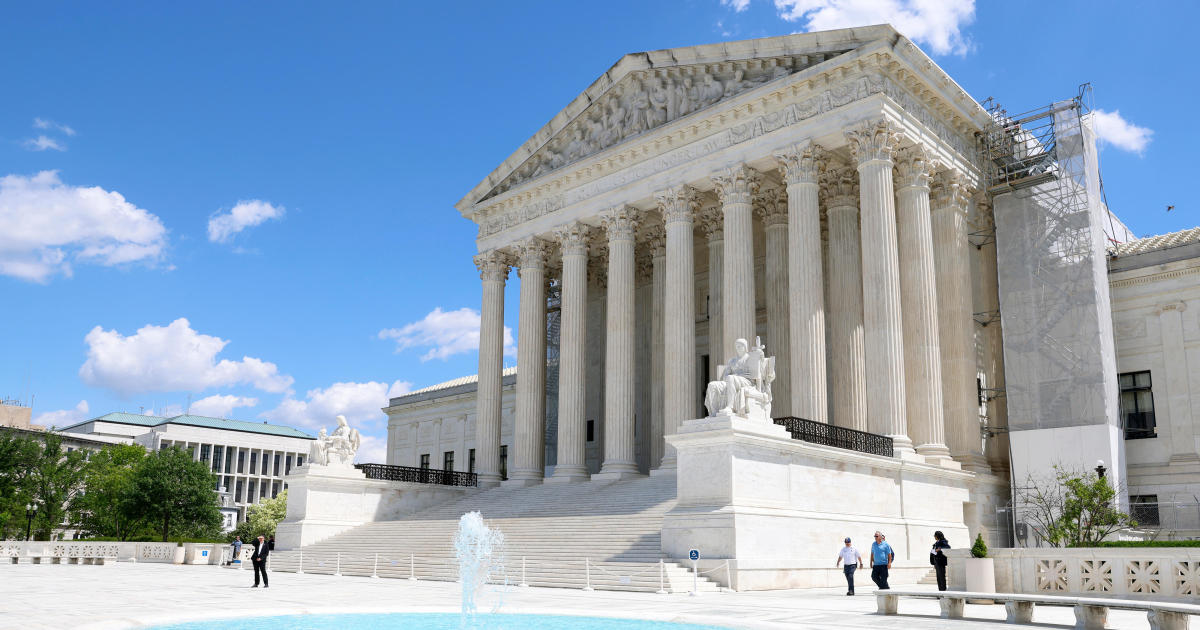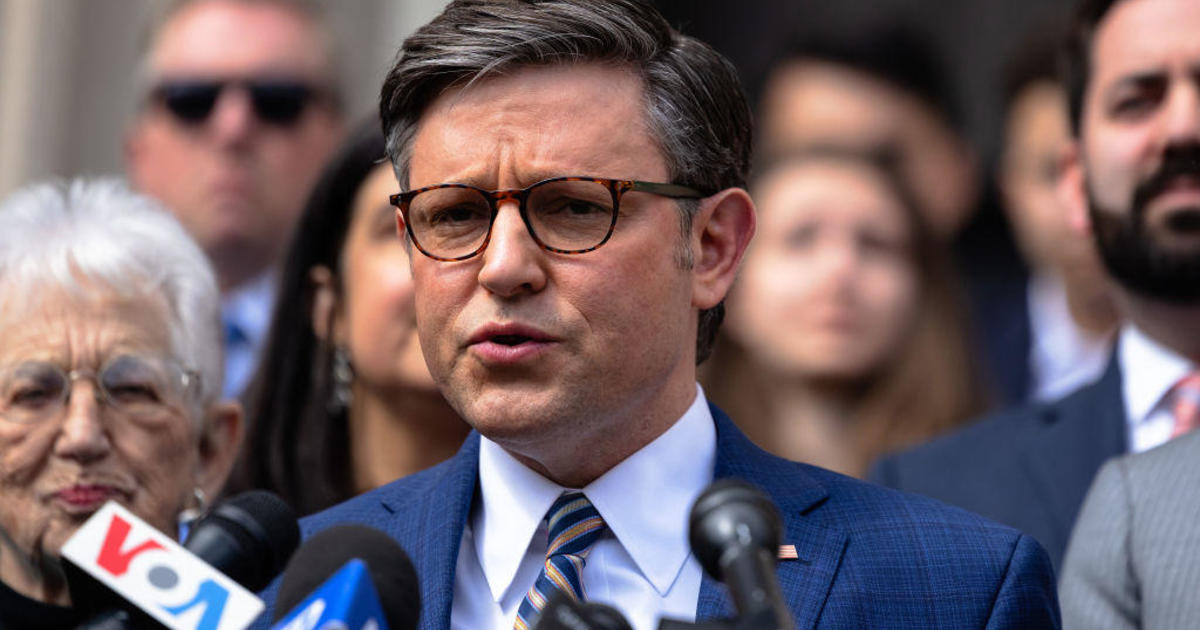Transcript: Michael Chertoff on "Face the Nation," May 24, 2020
The following is a transcript of an interview with Former Homeland Security Secretary Michael Chertoff that aired Sunday, May 24, 2020, on "Face the Nation."
MARGARET BRENNAN: We go now to Michael Chertoff. He's a former secretary of Homeland Security and is co-chairing the task force focused on reopening the District of Columbia. He joins us this morning from Washington, D.C. Good to have you with us.
FORMER SECRETARY OF HOMELAND SECURITY MICHAEL CHERTOFF: Good to be on, MARGARET.
MARGARET BRENNAN: The Washington, D.C. metro area has the highest positivity rate of COVID in the country, according to the White House. There are still significant virus circulating here, according to Dr. Birx. Is it safe to open the capital?
CHERTOFF: Well, of course, the paramount concern has been safety, and the good news, at least in the district, is it looks like over the past 11, 12 days, we've had a steady decrease in new cases, and our transmission rate is now somewhat less than one transmission per person. So as long as that continues, we should be in a position to begin the process of reopening in about a week. But we're doing this in a very deliberate way. The mayor has set forth a series of stages which we've recommended, and the idea is to simply take it a step at a time and make sure while we're doing this, we're doing it in a way that maximizes safety.
MARGARET BRENNAN: D.C. is, you know, the nerve center for the federal government. It is where members of Congress fly in and out of. There's just a unique set of risk factors here. Why do you think that there still is this level of virus circulating and- and does that concern you at this point?
CHERTOFF: Well, obviously, we're concerned that you have virus at any level. We may have started a little bit later, for example, than New York and California, and therefore their peak may have been earlier. But as I say, we are in the process now, at least of beginning to see a decline. But as you point out, MARGARET, we do get a lot of visitors and people coming in to work who originate from other parts of the country. And that means we get more vectors coming in with infection than might be the case, for example, in a city where you don't get a lot of people from out-of-state. So that presents a unique set of challenges. And we're trying to work with our neighboring counties in Virginia and in Maryland, again, to mitigate the risk as we move forward.
MARGARET BRENNAN: Now, one of the recommendations that you put forward, whether or not the mayor takes it, is not to fully reopen schools for in-person learning until there is a vaccine. How would that work? What do you mean by that?
CHERTOFF: Well, the idea is, at least in stage one, to have distance learning, have it be done remotely. But then over the next two stages, which mean that we would have basically reduced the outbreak to isolated outbreaks, during the next period of time, we would slowly begin to bring students in. Those entering transitional grades or needing extra instruction would come in first. We'd make sure to maintain distancing in classrooms to keep the collection of people in a particular classroom below a certain number, like 10; to make sure the same youngsters were together throughout the day so you don't have a lot of people mixing with other groups; and then to have present on staff people with health background and experience in case someone displays symptoms or some issue arises. And the idea would be eventually during the course of this time, to basically reopen, but in a very measured and deliberate way.
MARGARET BRENNAN: Now, you, as we mentioned, ran homeland security at one point during the Bush administration. You sim- simulated how to respond to a pandemic. Is the current administration running your playbook?
CHERTOFF: Well, I mean, our playbook, of course, was something that was built about 15 years ago. Some of the elements of the playbook I think we see running now. I know, for example, Dr. Anthony Fauci worked closely with us 20 years ago on this, and he's still very much involved and engaged. I think some areas where there's been perhaps a shortfall has been in the stockpiling of medical equipment and protective gear, which was not present in sufficient quantities when this began. And there was a bit of a delay, perhaps, in recognizing that we needed to deal with traveling from Europe, which turned out to be one of the major vectors for bringing the infection into the United States from other parts of the globe.
MARGARET BRENNAN: Sure.
CHERTOFF: But I always hasten to say that no crisis or emergency ever plays out exactly the way you've planned. What the planning should allow you to do is equip yourself and train yourself to adapt. And, fortunately, we have professionals in the health field and in homeland security who do understand how this works.
MARGARET BRENNAN: Now, one thing in terms of planning we're looking at is the fall and the possible resurgence, that could overlap with the election. I know you look at election security. I want to read for you something the president tweeted this morning. He said, "The U.S. cannot have all Mail In Ballots. It will be the greatest Rigged Election in history. People grab them from mailboxes, print thousands of forgeries and 'force' people to sign...forge names. Some absentee OK, when necessary. Trying to use Covid for this Scam!" What should national security professionals be planning for the election? And should it include mail-in ballots?
CHERTOFF: I believe it should definitely include mail-in ballots. There's never been a demonstration of widespread fraud or misbehavior in mail-in ballot- ballots. Actually, many years ago, I prosecuted somebody who committed election fraud, but it just was a handful of ballots for people who were incapacitated. The- the positive side of mail-in ballots is it allows people to vote without putting themselves at risk for long lines in an actual physical election voting sites. The other thing we can do in addition to mail-in, is to have many more sites for curbside voting where you drive up, and you can deposit your ballot right on the site and it's in lockdown. So having the most options possible is the best way to make sure people get to exercise their very important franchise as voters.
MARGARET BRENNAN: All right. Secretary Chertoff, thank you for joining us. We'll be right back.



